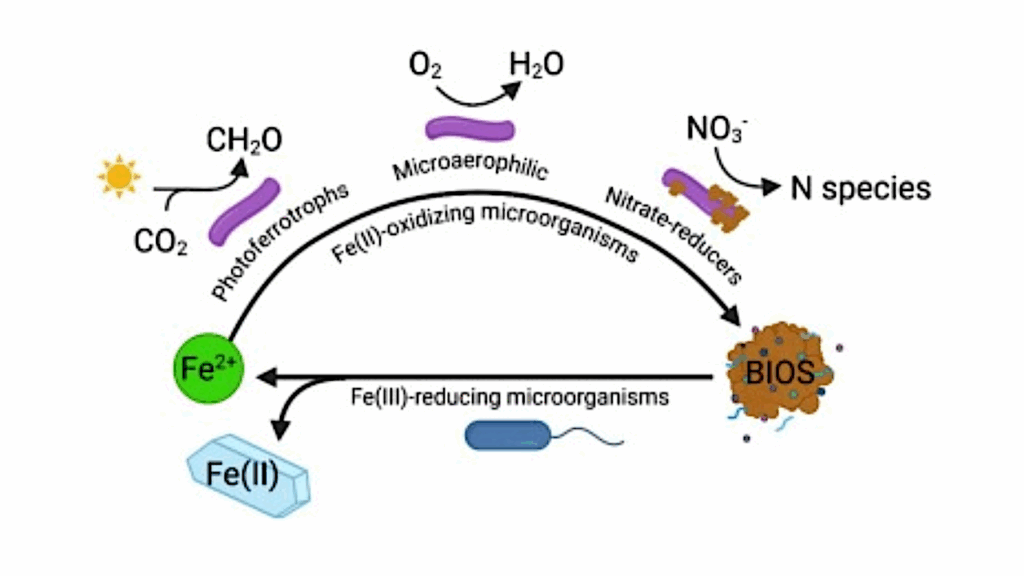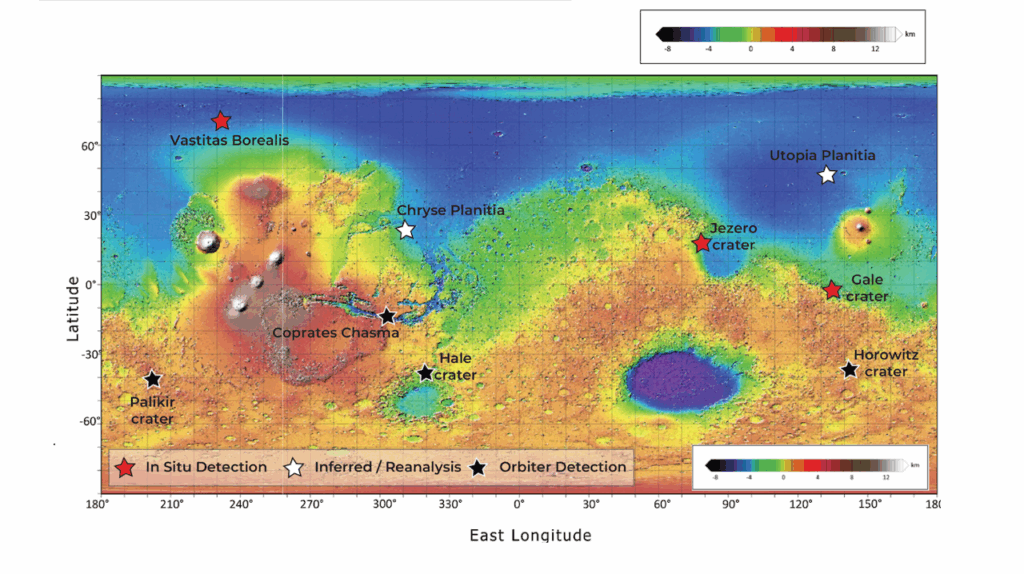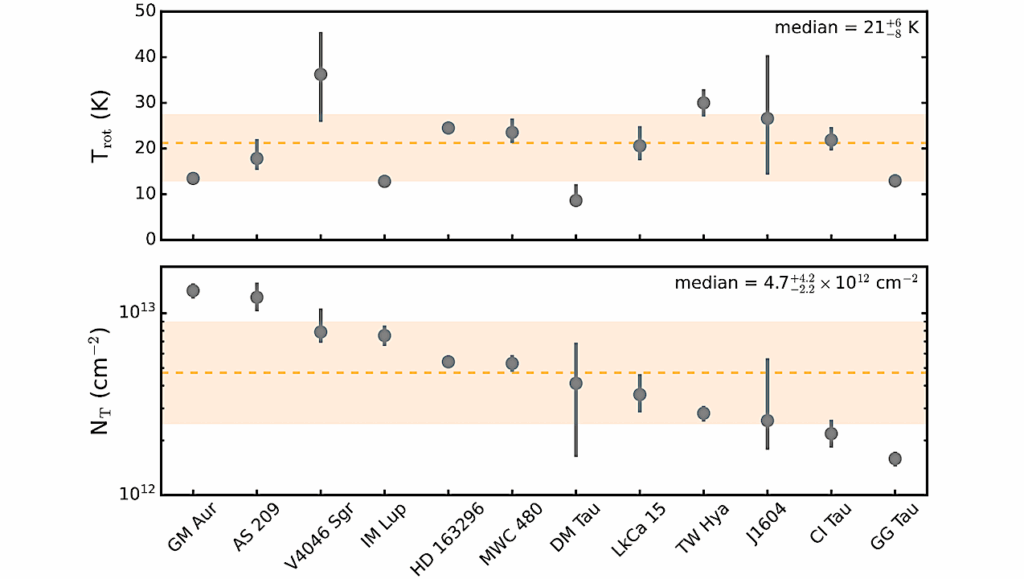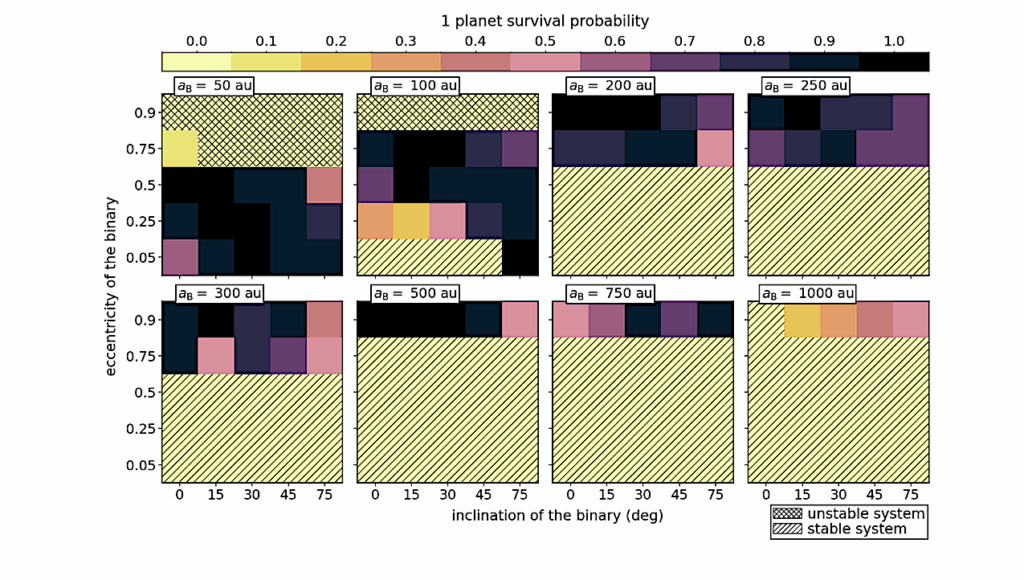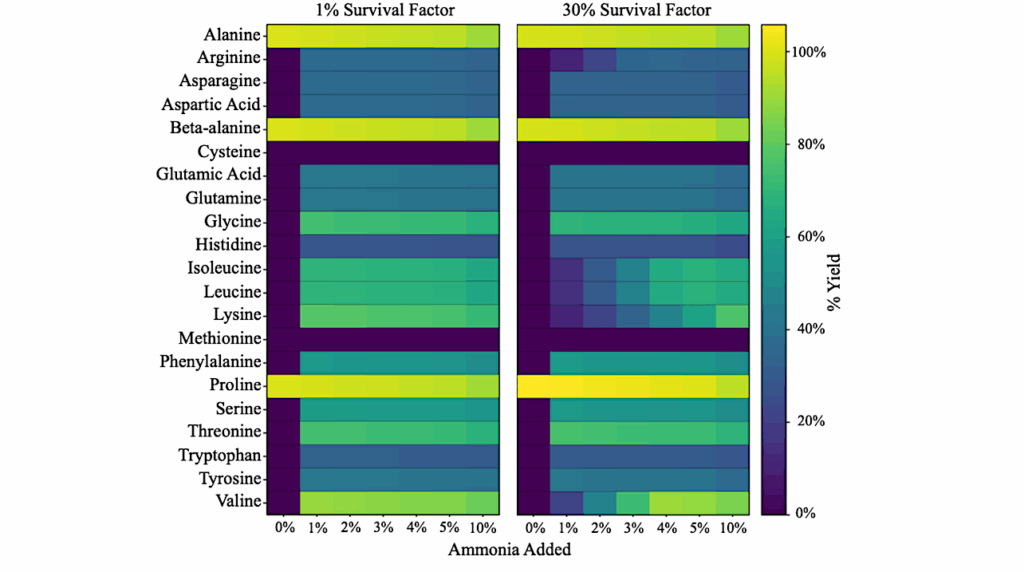Simple Lipids Form Stable Higher-order Structures In Concentrated Sulfuric Acid
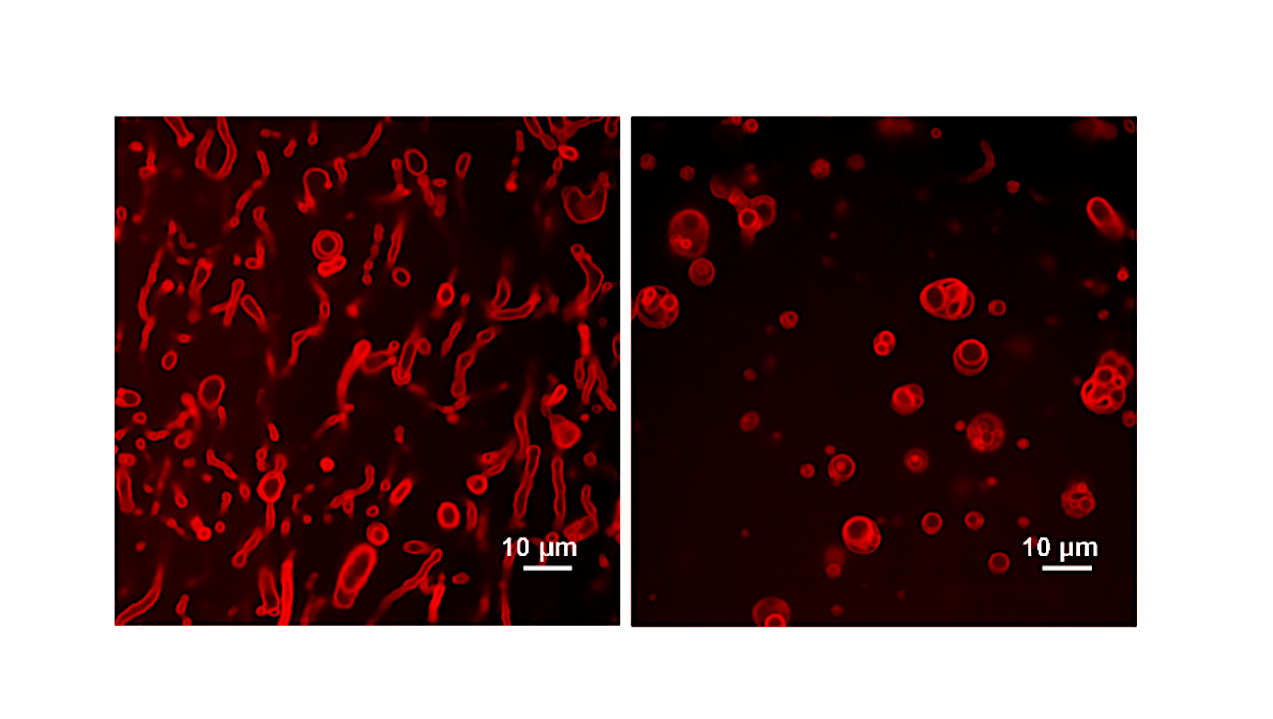
Venus has become a target of astrobiological interest because it is physically accessible to direct exploration, unlike exoplanets. So far this interest has been motivated not by the explicit expectation of finding life, but rather a desire to understand the limits of biology.
The Venusian surface is sterilizing, but the cloud deck includes regions with temperatures and pressures conventionally considered compatible with life. However, the Venusian clouds are thought to consist of concentrated sulfuric acid.
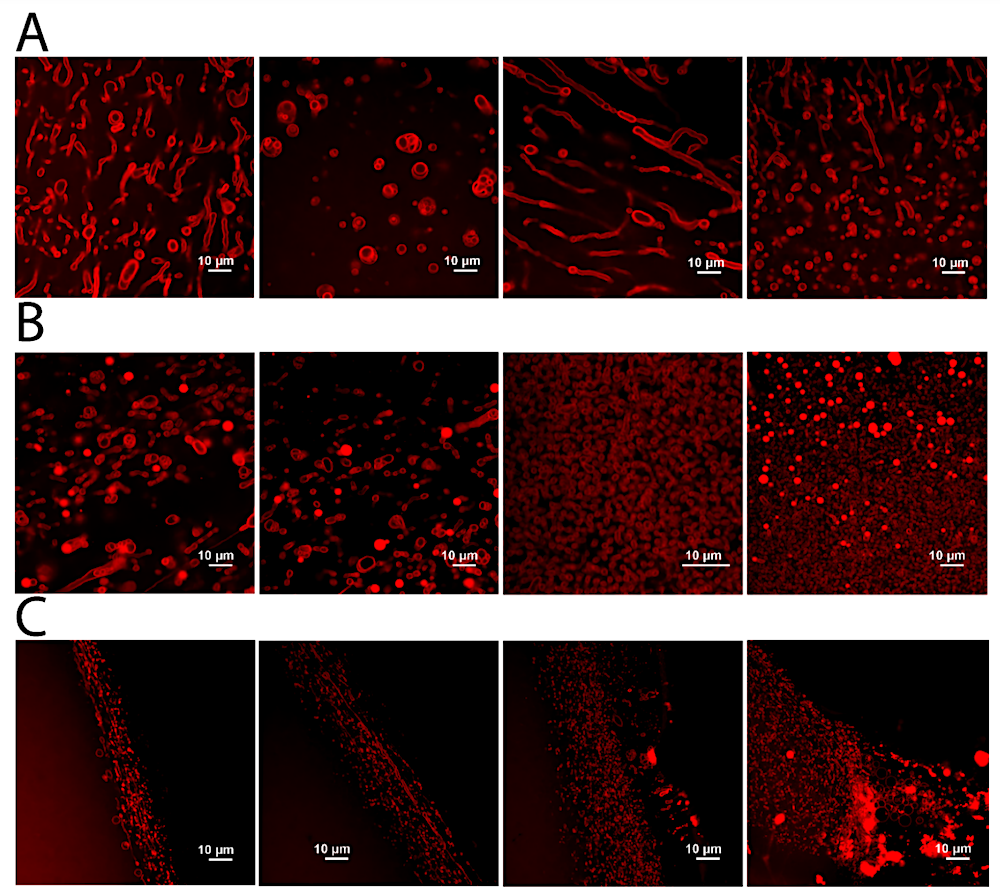
Vesicle-like structures form after addition of concentrated sulfuric acid to solid lipids. Confocal images of BODIPY stained SDS-DTMA lipids from samples prepared in 70% (A), 80% (B), and 90% (C) sulfuric acid. In all samples, vesicles of varying size and other lipid structure morphologies are observed. Each panel is a different region of the same sample, taken on the same day. These results indicate that the signals observed in the DLS readings are due to the presence of lipid-based structures. — astro-ph.EP
To determine if any fundamental features of life as we understand them here on Earth could in principle exist in these extreme solvent conditions, we have tested several simple lipids for resistance to solvolysis and their ability to form structures in concentrated sulfuric acid.
We find that single-chain saturated lipids with sulfate, alcohol, trimethylamine, and phosphonate head groups are resistant to sulfuric acid degradation at room temperature. Furthermore, we find that they form stable higher-order structures typically associated with lipid membranes, micelles, and vesicles.
Finally, results from molecular dynamics simulations suggest a molecular explanation for the observed robustness of the lipid structures formed in concentrated sulfuric acid. We conclude with implications for the study of Venus as a target of experimental astrobiology.
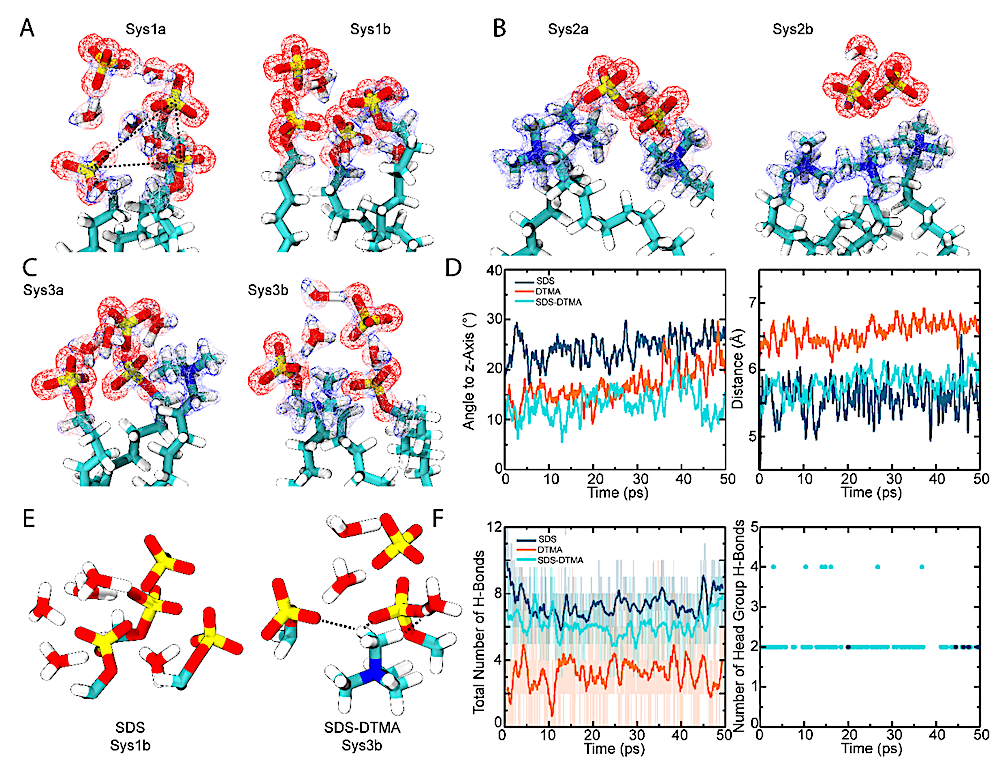
Modeling and Simulation of SDS and DTMA membranes. The final frame of the QM/MM simulations showing the electron density for the SDS only (A), DTMA only (B), and SDS-DTMA (C) systems. For clarity, only the lipids and solvent molecules associated with the QM region are shown. Dashed lines in (A) show the distances between head groups and the plane formed by the three head groups. (D) The angle between the axis perpendicular to the plane formed by the three head groups (left panel), and the average distances between head groups (right panel) are shown for all systems over the 50 ps simulations. (E) Snapshot of the SDS only system (left) and SDS-DTMA system (right), showing detail of the interaction between solvent molecules and head groups. Dashed lines indicate hydrogen bonds between head groups. (F) Total number of hydrogen bonds between all molecules (left panel; 0.6 ps running average shown in dark lines) and hydrogen bonds between head groups (right panel). The results of these simulations provide a potential mechanistic explanation for the robustness of SDS-DTMA membranes in sulfuric acid. — astro-ph.EP
Daniel Duzdevich, Collin Nisler, Janusz J. Petkowski, William Bains, Caroline K. Kaminsky, Jack W. Szostak, Sara Seager
Comments: Submitted to Astrobiology
Subjects: Chemical Physics (physics.chem-ph); Earth and Planetary Astrophysics (astro-ph.EP); Biological Physics (physics.bio-ph)
Cite as: arXiv:2409.12982 [physics.chem-ph] (or arXiv:2409.12982v1 [physics.chem-ph] for this version)
https://doi.org/10.48550/arXiv.2409.12982
Focus to learn more
Submission history
From: Janusz Petkowski
[v1] Tue, 3 Sep 2024 10:58:05 UTC (8,170 KB)
https://arxiv.org/abs/2409.12982
Astrobiology


